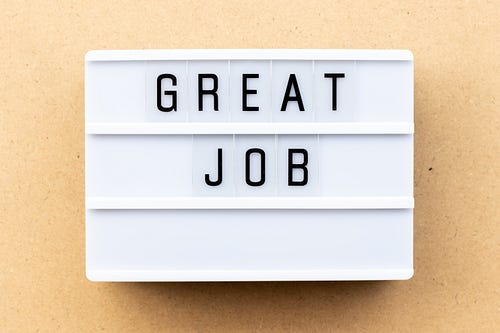We have been supporting Andy designing a job architecture for the corporation he has been building his career with. In that one meeting he was clearly in distress. His Board had asked him to provide them with a reasonable number of employees which can safely be laid off. Besides of having to let valuable people go, he was uneasy because cutting employee costs apparently seems to have been the only option being discussed to counter a changing technology environment.

New technologies have an undeniable impact on business models, products and workforces. This much is clear. They provide productivity gains and innovation potential. We devour news about the most recent, stunning achievements of AI. We are horrified by the stories about large layoffs of yet another industrial giant that has an obsolete product because their strategic decisions were oh so wrong.
That’s easy to say in hindsight. Because what has not become clear is how we best inform our thinking that occurs before we make strategic decisions. Our VUCA world keeps on spinning ever faster with ostensible options seemingly coming and going on a daily basis. The results of foresight as a structured approach are becoming more volatile. How could Andy gain transparency of the real impact of new technologies on his workforce? How could he expand his Board’s perception of their strategic options and discover all the choices at their disposal?
New technologies have impact on every company
We have seen this before. There is probably not a single corporation in this world which is not aware of the impact that new technologies will have on their business. The problem lies rather in achieving transparency in this complex situation and gaining visibility of the impact in the various parts of a company.
For not depending on a crystal ball, you’ll need to work with real, individual company data. So, we fanned out and talked to subject matter experts in the technologies which will shape our century, with economists, sociologists and even organizational psychologists. And we found a way forward.
Here’s what doesn’t work
We encountered scepticism towards purely software-based approaches. There exist doubts that a machine learning process cannot properly inform our thinking because the data patterns it detects don’t necessarily mean that one can act on them. There exist also comprehensive doubts that an AI — even coded by world-class programmers — can lead to actionable results if they don’t have a deep understanding of how your industry actually works. AI needs specific instructions and parameters but the interplay between different influencing factors is not the same in all industries — even more so when talking about individual companies. After all, you can’t take strategic decisions based on general averages.
Here’s what your foresight model needs to achieve for you

Con trary to general opinion, our decades long experience in HR-consulting made as less complacent and more entrepreneurs over the years. We had to come up with a solution. So, we started developing our proprietary model with three commands in mind. Anything less wouldn’t solve the problem.
· Develop company-specific foresight, based on a company’s own reality, data and existing initiatives.
· Develop actionable results, based on the design and comparison of various business cases.
· Develop reliable results, with a transparent framework.
Our three secret ingredients
First: We developed our Level of Work Matrix © into Work Impact Profiles, built on the best practices of job architecture design and deep knowledge of how technology can impact individual jobs. Why using job data? Because it provides a reliable and readily available description of your reality today as a starting point. We fill the matrix with your organizational structure and anonymized data of the members of your organization.
Second: Our Data Model breaks down the exposure to disruption by new technologies for every single position in your organisation. It provides a clear visualization of a complex environment and enables an easy understanding of the exposure to disruption existing in your company (i.e. by unit, geography or seniority level).
Third: The most important secret ingredient is YOU. There is no one better to understand your business than the people in your company. Your people have the expert knowledge and experience needed to adapt a model in its details to your specific reality. Together we discuss the first set of results and adapt the data model to your individual situation. This not only improves the foresight to be used for your strategic decisions. It also gets your people on board for the decisions you make.
Why so simple
Well, it sounds simple but a bit of work is always involved. Our approach is a transparent process rather than a magic black box. With our model and your expertise, we reach the transparency necessary to come to a clear understanding of the mid and long-term impact of new technologies on your business reality and your workforce.
We went through this process together with Andy. We involved various of his colleagues, compared different scenarios and (existing) transformation initiatives. Andy provided his Board with a larger set of choices and actionable options. Clearly visualized and easily understandable.

We don’t have the details of how Andy’s presentation went.
But when he asked us with a broad smile to develop a plan for reskilling part of their workforce, he seemed particularly content.
